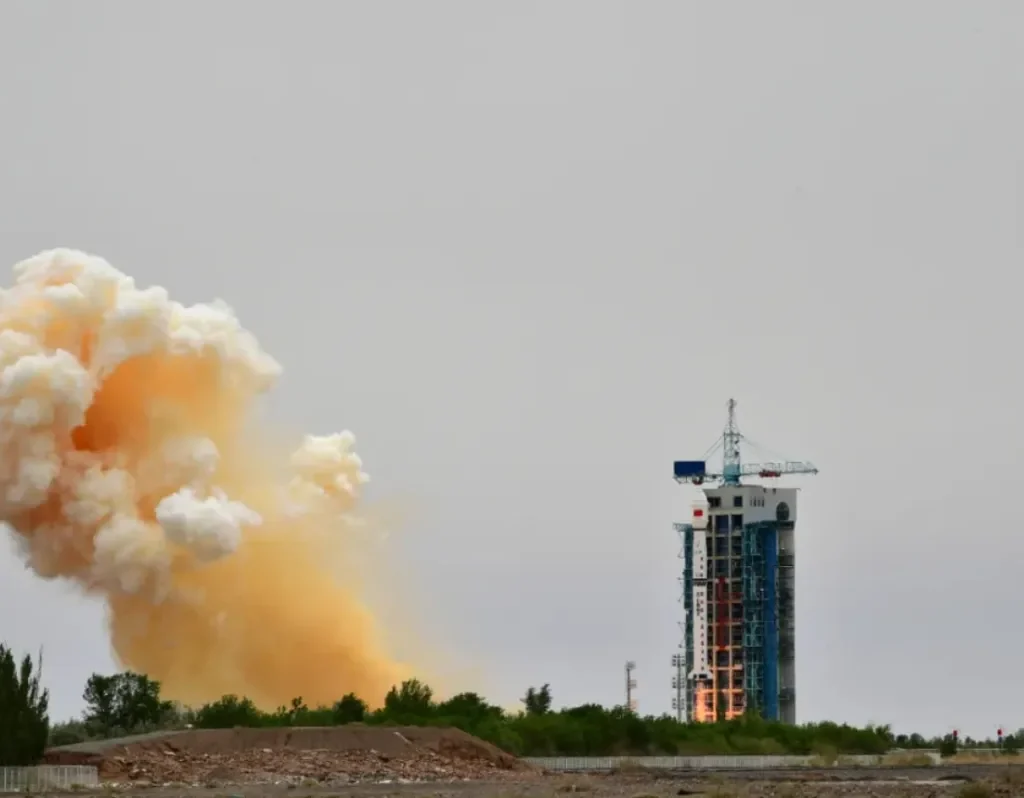China successfully launched its ninth orbital mission of the month early Thursday, sending the experimental Shijian-26 spacecraft into orbit aboard a Long March 4B rocket from the Jiuquan Satellite Launch Center in northwest China.
The rocket lifted off at 12:12 a.m. Eastern (0412 UTC) May 29, with insulation tiles visibly shedding from the payload fairing during ascent through a cloudy sky. The Shanghai Academy of Spaceflight Technology (SAST), which provided the Long March 4B booster, confirmed mission success within an hour of liftoff.
SAST disclosed that the payload was the previously unpublicized Shijian-26 satellite. No images or further technical details of the spacecraft were released. According to Chinese state media, the satellite primarily supports national land surveys, environmental management, and other information services that aid economic development.
Shijian-26 was developed collaboratively by the Dongfanghong Satellite company under the China Academy of Space Technology (CAST), the Harbin Institute of Technology (HIT), and the Changchun Institute of Optics, Fine Mechanics and Physics (CIOMP), part of the Chinese Academy of Sciences (CAS). The involvement of CIOMP suggests remote sensing functions, while the lack of imagery and the participation of organizations with dual-use technology expertise indicate potential classified or military-related applications.
Tianwen-2 is an exploration mission, but it has been treated with a great deal of secrecy. The launch was not broadcast live, and we have not seen the actual spacecraft (unlike Tianwen-1). We have only a few renders of Tianwen-2, which is now in heliocentric orbit. https://t.co/PGZMMF3xov pic.twitter.com/AscNN3t1CF
— Andrew Jones (@AJ_FI) May 29, 2025
The Shijian series comprises experimental satellites focused on testing new technologies. Past missions include Shijian-25, launched in January to trial on-orbit refueling and mission extension capabilities, and Shijian-21, which demonstrated space debris mitigation by towing a defunct satellite to a graveyard orbit. Other notable satellites in the series include the retrievable Shijian-19 science satellite, the 8,000-kilogram Shijian-20, and Shijian-17, which conducted maneuvering and proximity operations in the geostationary belt.
This launch comes amid a surge in China's space activity. It followed closely on the heels of a vertical takeoff and splashdown test by the Sepoch reusable vehicle, and the launch of Tianwen-2 — a mission to sample an asteroid and rendezvous with a comet — which began its year-long journey after lift-off from Xichang Satellite Launch Center. The Tianwen-2 mission was conducted with notable secrecy, with no live broadcast or spacecraft imagery released.
Earlier this month, China resumed flights of the Kinetica-1 (Lijian-1) solid rocket operated by CAS Space, a commercial arm of CAST. On May 21, the Kinetica-1 launched six satellites, including optical, synthetic aperture radar, and multispectral imaging payloads for various commercial and government customers.
China's rapid launch cadence now totals 32 orbital launch attempts for 2025, including nine in May alone. While official 2025 launch targets have not been publicly stated, industry analysts speculate that China could aim for approximately 100 missions this year, underscoring the country's expanding ambitions in space operations and technology development.
